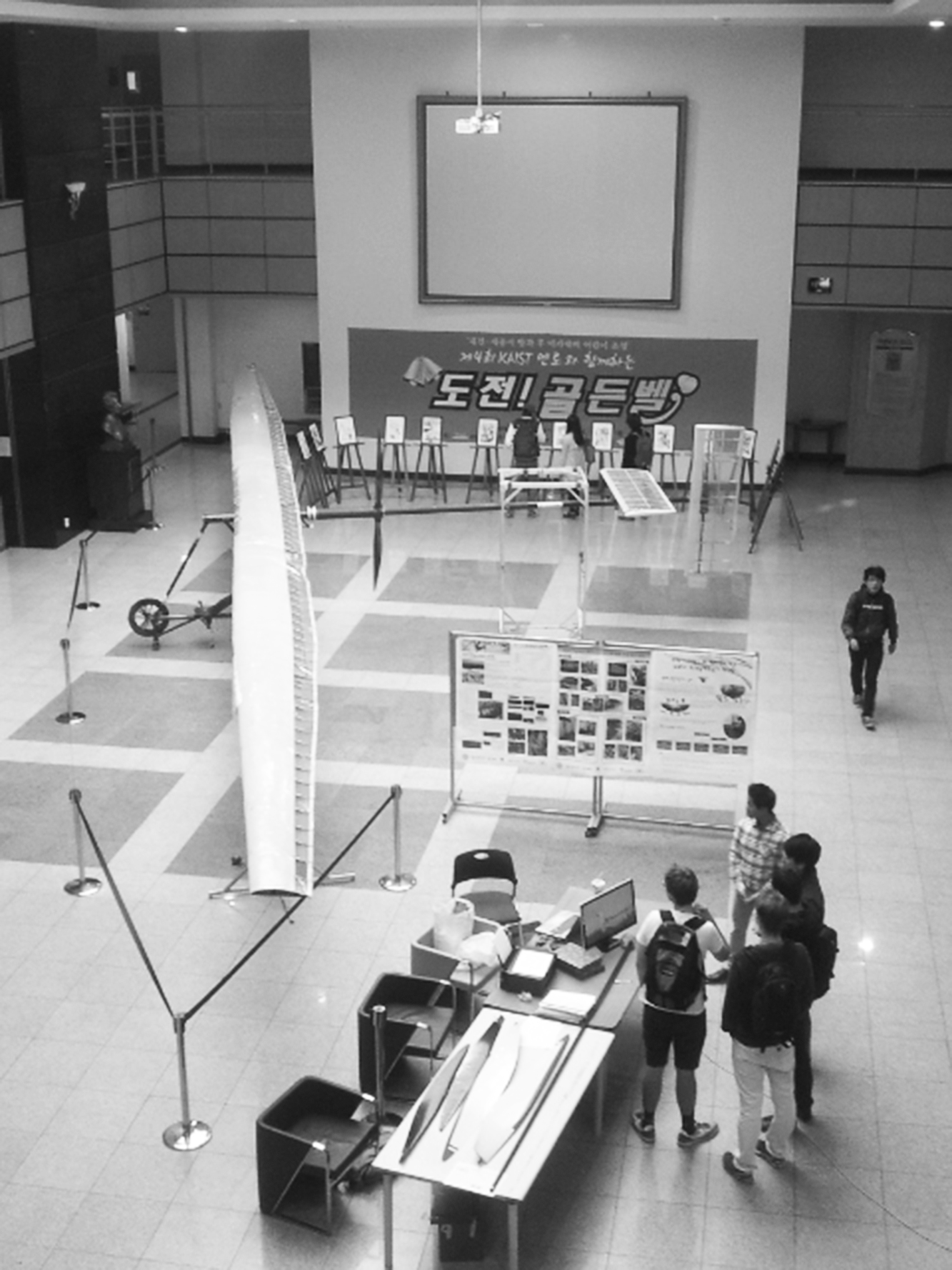
The KAIST undergraduate flight research team, ICARUS, has constructed a human-powered airplane and competed in the 2014 Human Powered Aircraft Competition. The constructed aircraft was on display for three days at the KAIST Creative Learning Building (E11) until October 29.
ICARUS, founded in 1996, consists exclusively of undergraduate students who share an interest for aerospace. The team works on many fight research projects and has a rich history in winning awards in many national aerospace competitions. The one-manned aircraft, powered by a pedal, was engineered by thirteen undergraduate students and supervised by Professor Jae-Hung Han of KAIST Department of Aerospace Engineering and Doctor Hyo-Gil Bae from the Korea Aerospace Research Institute (KARI). The team was divided into five groups: Design, Manufacturing 1, Manufacturing 2, Circuit, and Administrative Team.
The design team used AutoCAD and 3D CATIA modeling programs for aircraft design. The wings were designed to provide sufficient lift and the pedal-powered propeller was modeled by computers as well. The manufacturing team used ultra-light carbon fiber composite materials for frame construction. It used advanced manufacturing methods, such as 3D printing and laser cutting. The circuit design team built electronic circuitry to control the 30-meter wide wing for aircraft control. The total weight of the aircraft was only 60 kg despite the large wingspan and was possible through the advanced materials and construction methods.
The project received financial support from KAIST, the Ministry of Trade, Industry, and Energy, KARI, and the Ministry of Science, ICT, and Future Planning. The ICARUS administrative team used the funding to order advanced supplies, with the aircraft manufacturing cost estimated to be around 40 million Korean Won. The design and construction of the human-powered aircraft took a year to complete.
The 2014 Human Powered Aircraft Competition was held on September 23 at the Korea Aerospace Research Institute (KARI) Aviation Center in Goheung. Competing teams had to achieve a flight distance of 400m within the shortest time possible. The winning team received 15 million Korean Won, the runner-up received 10 million Korean Won, the third received 5 million Korean Won.

